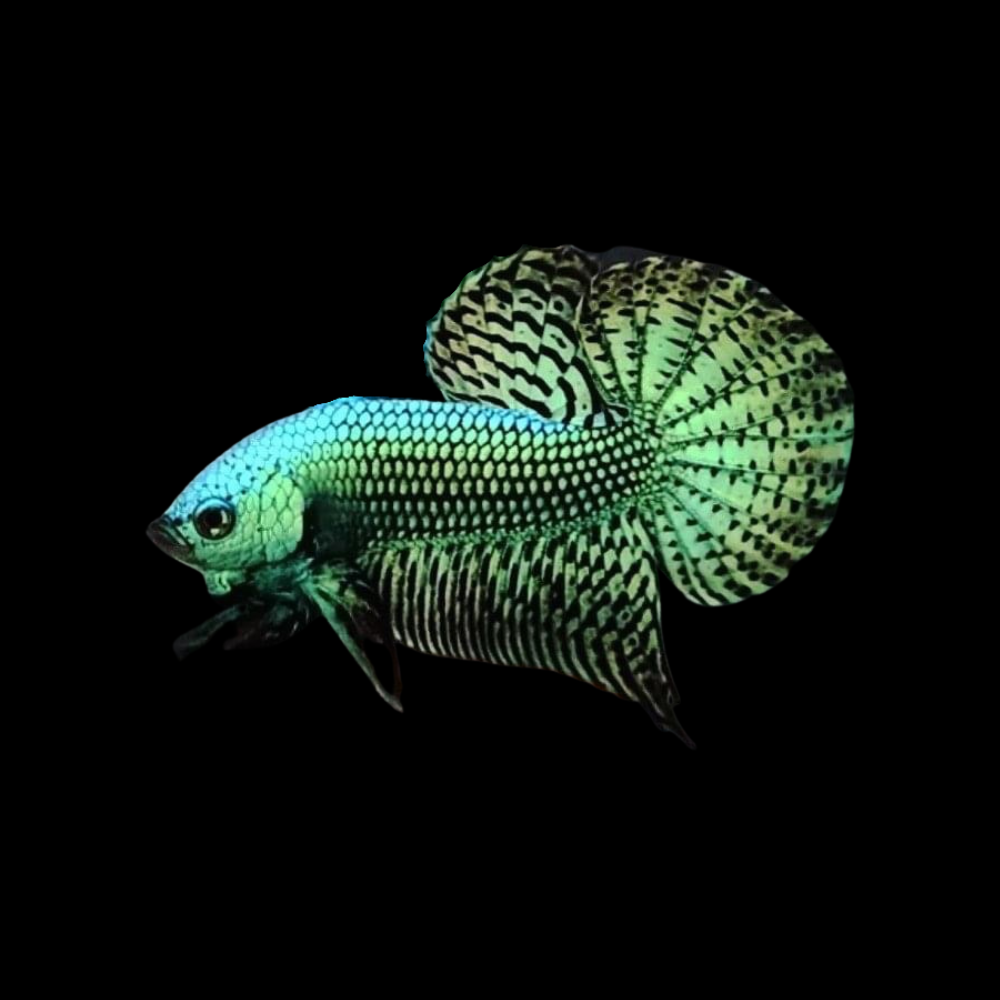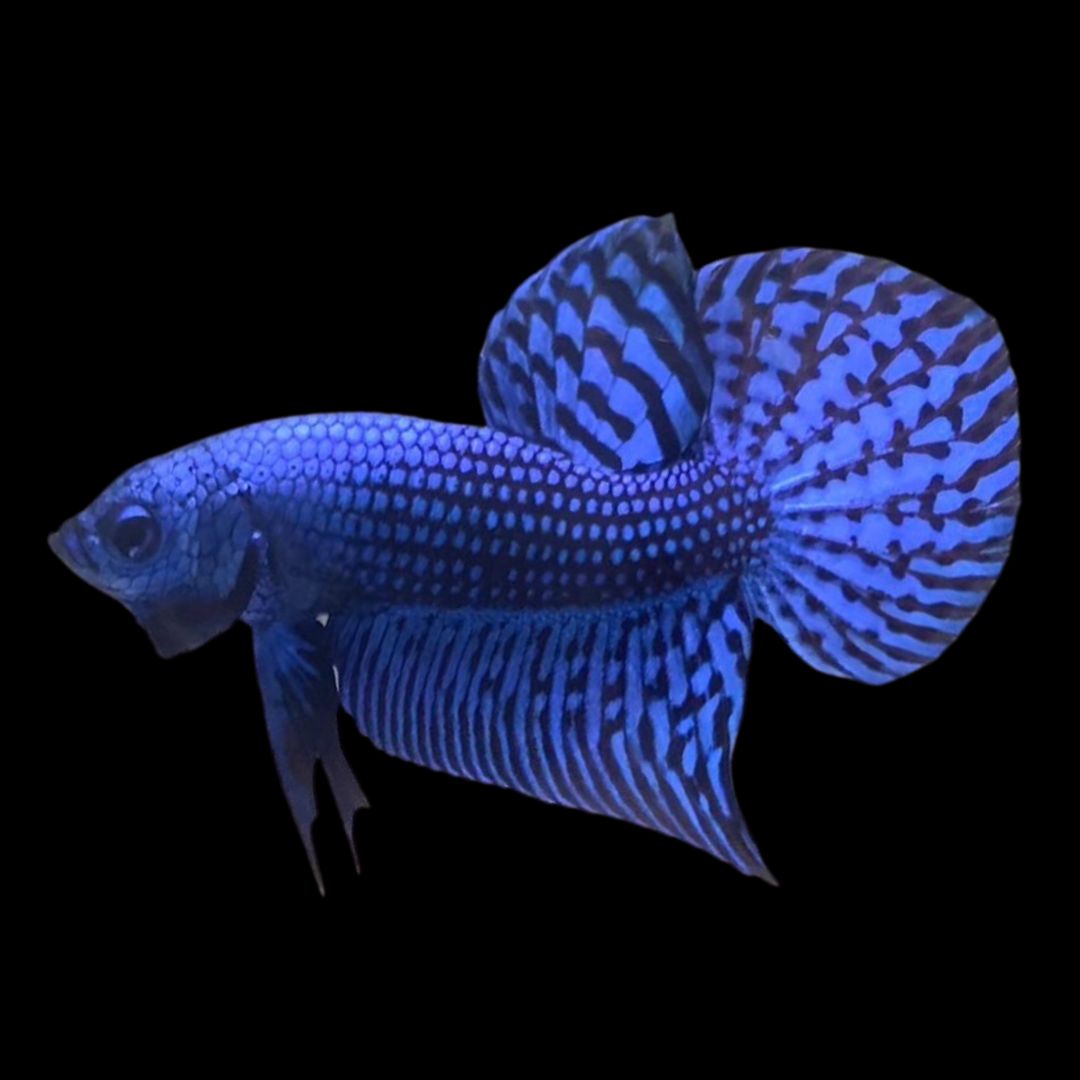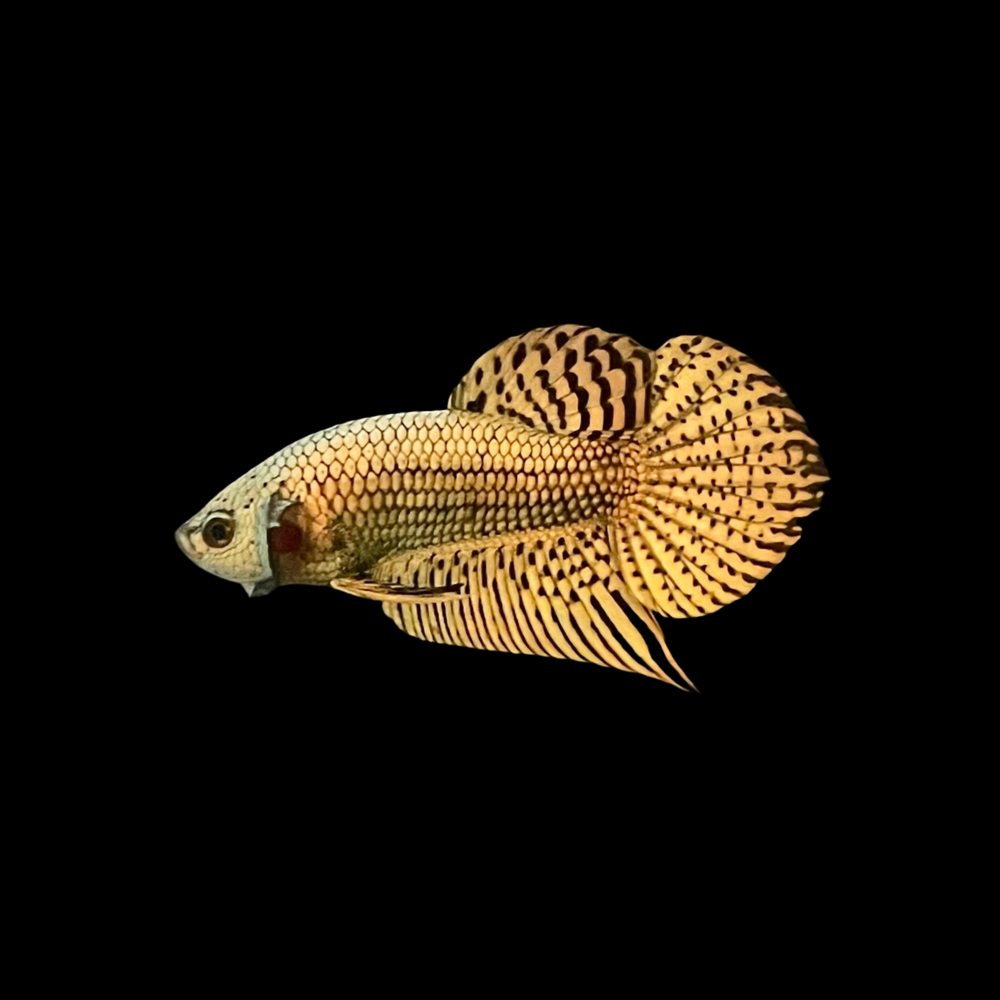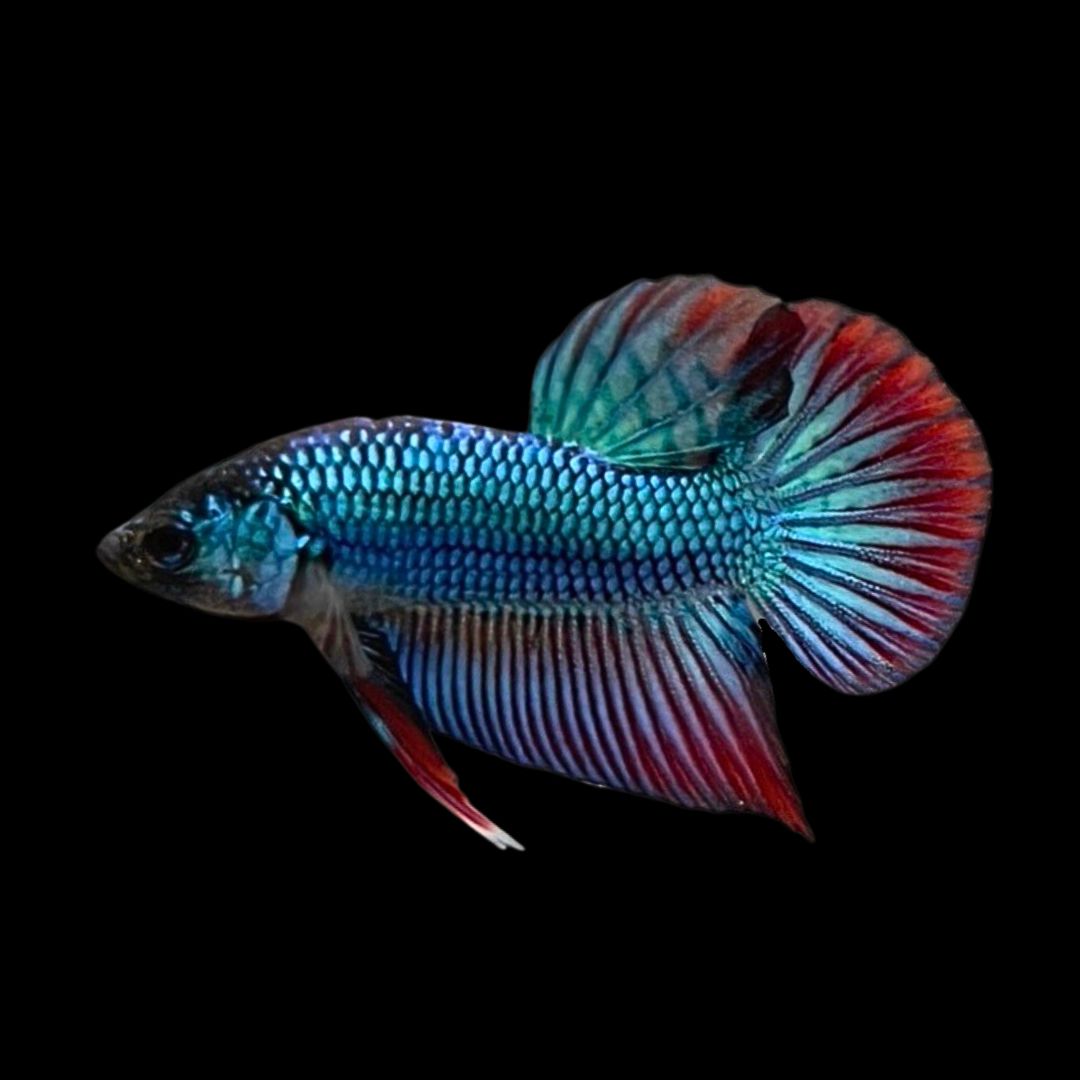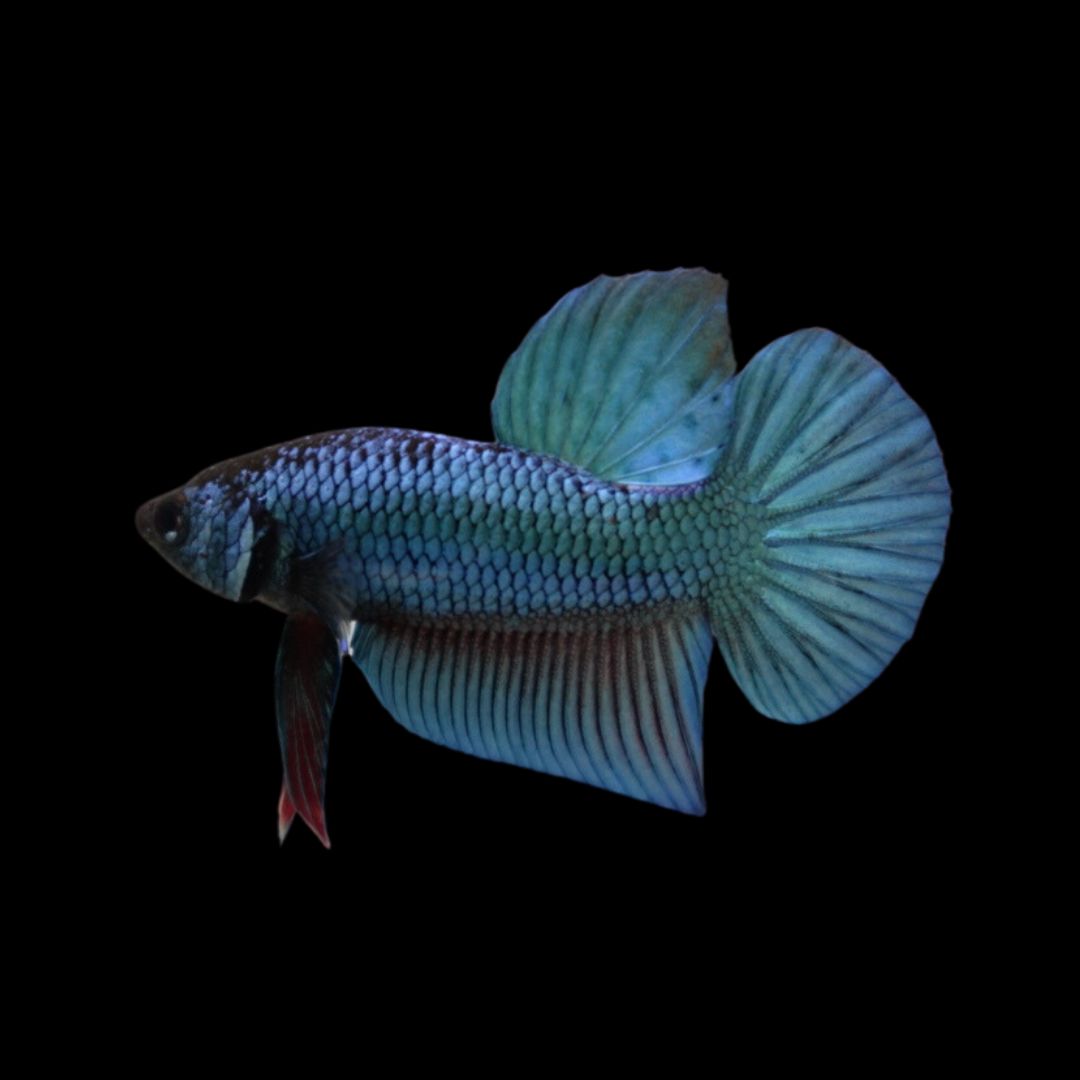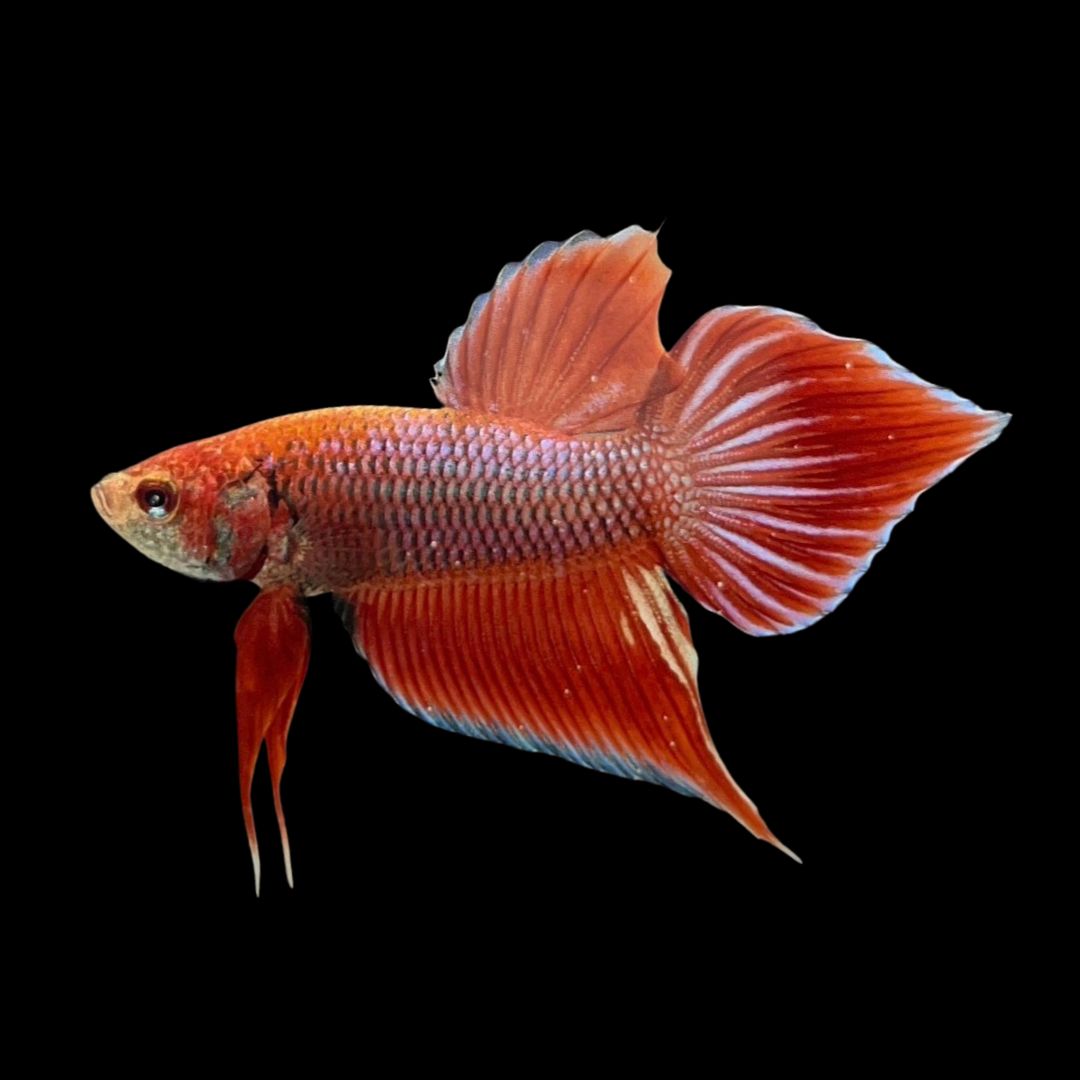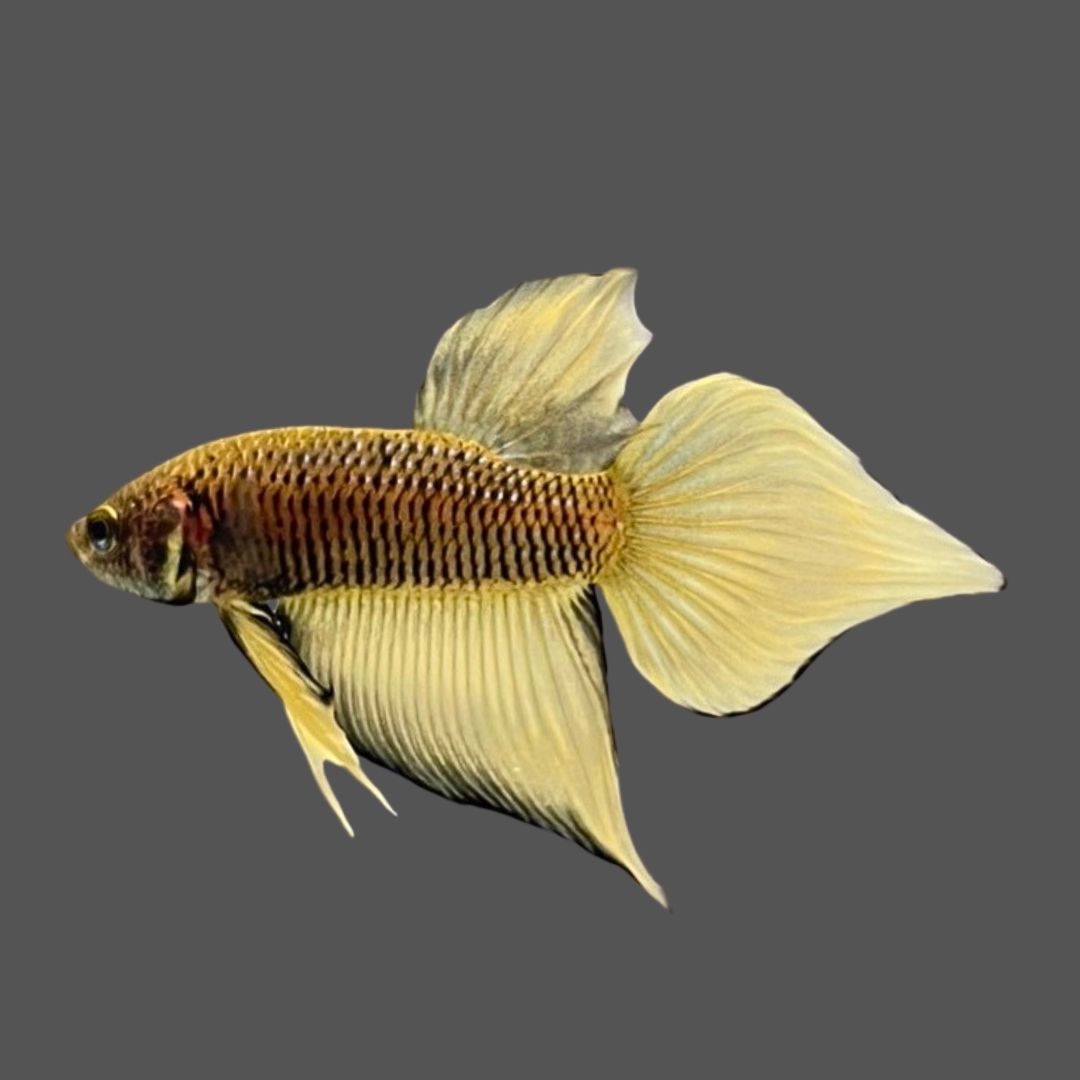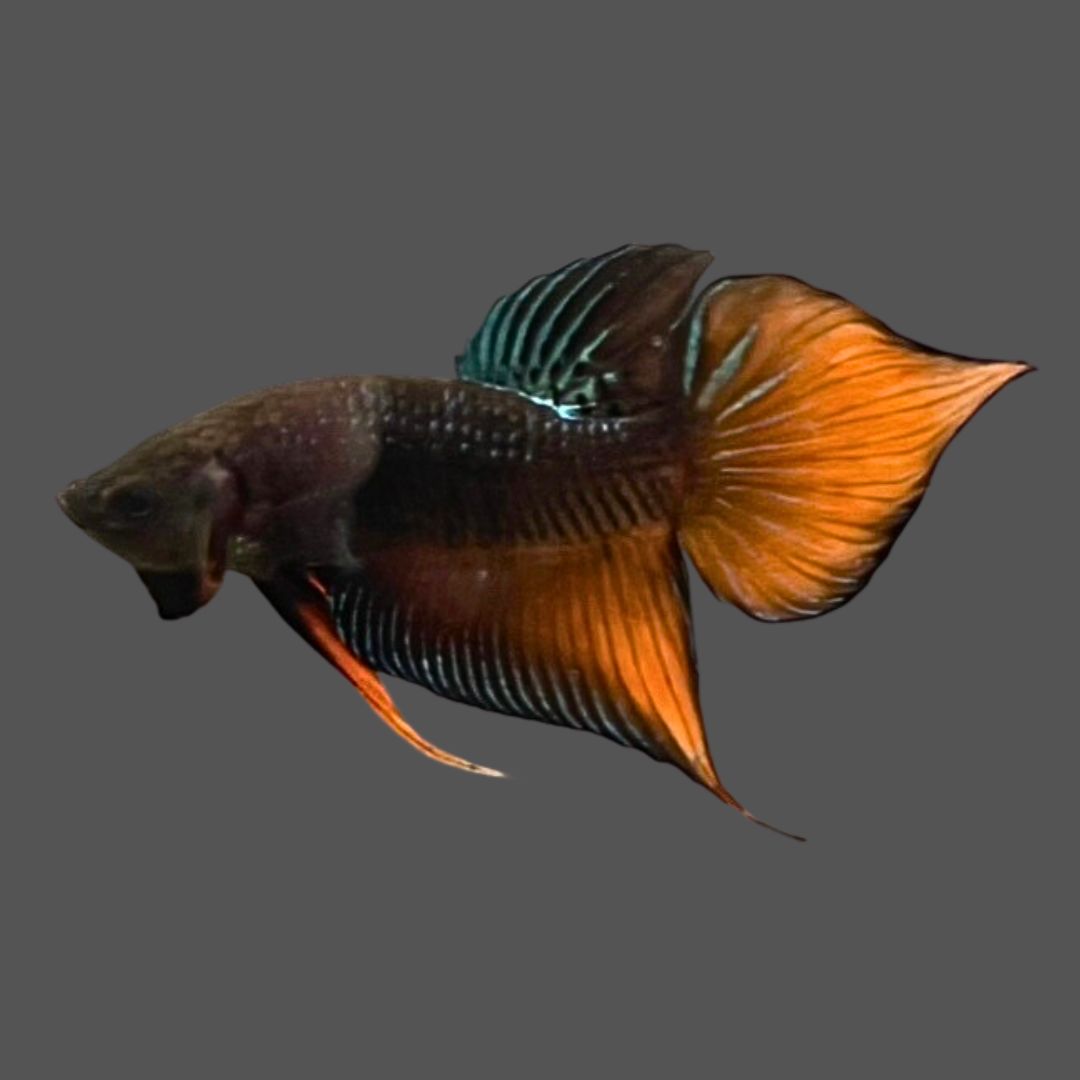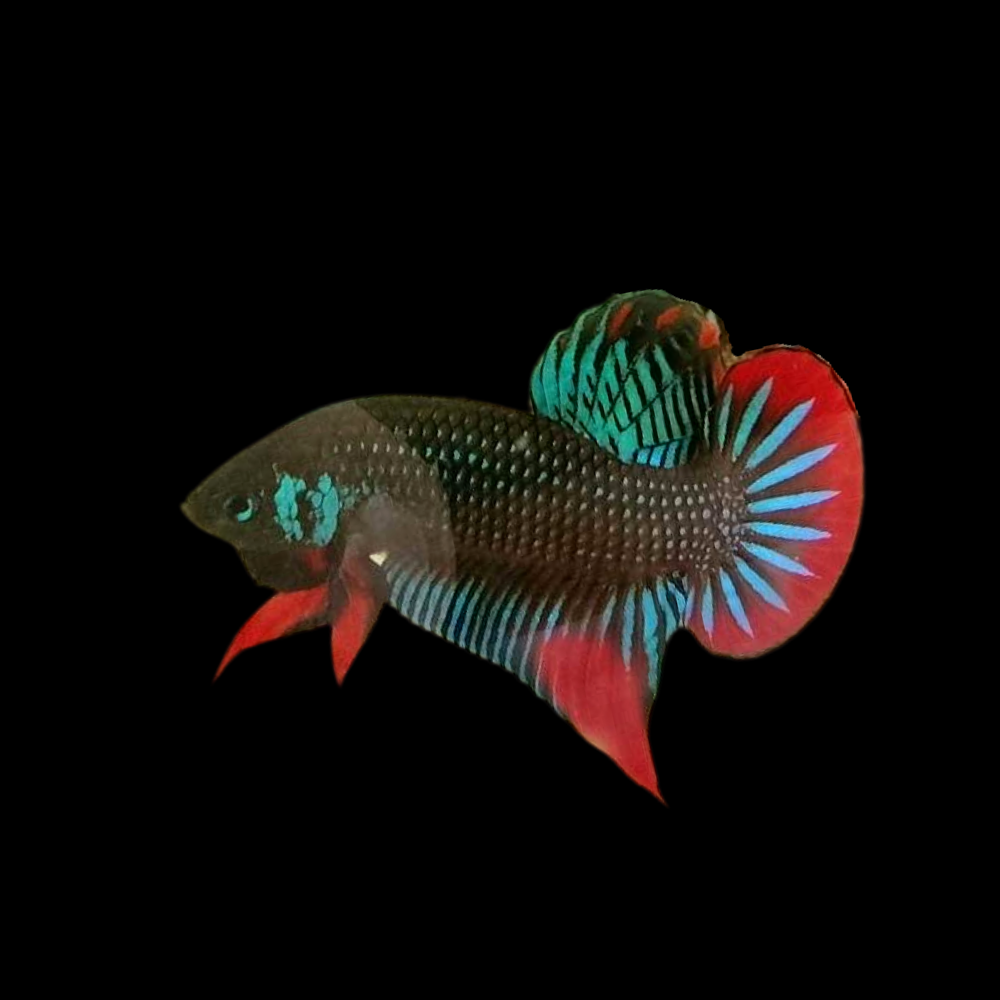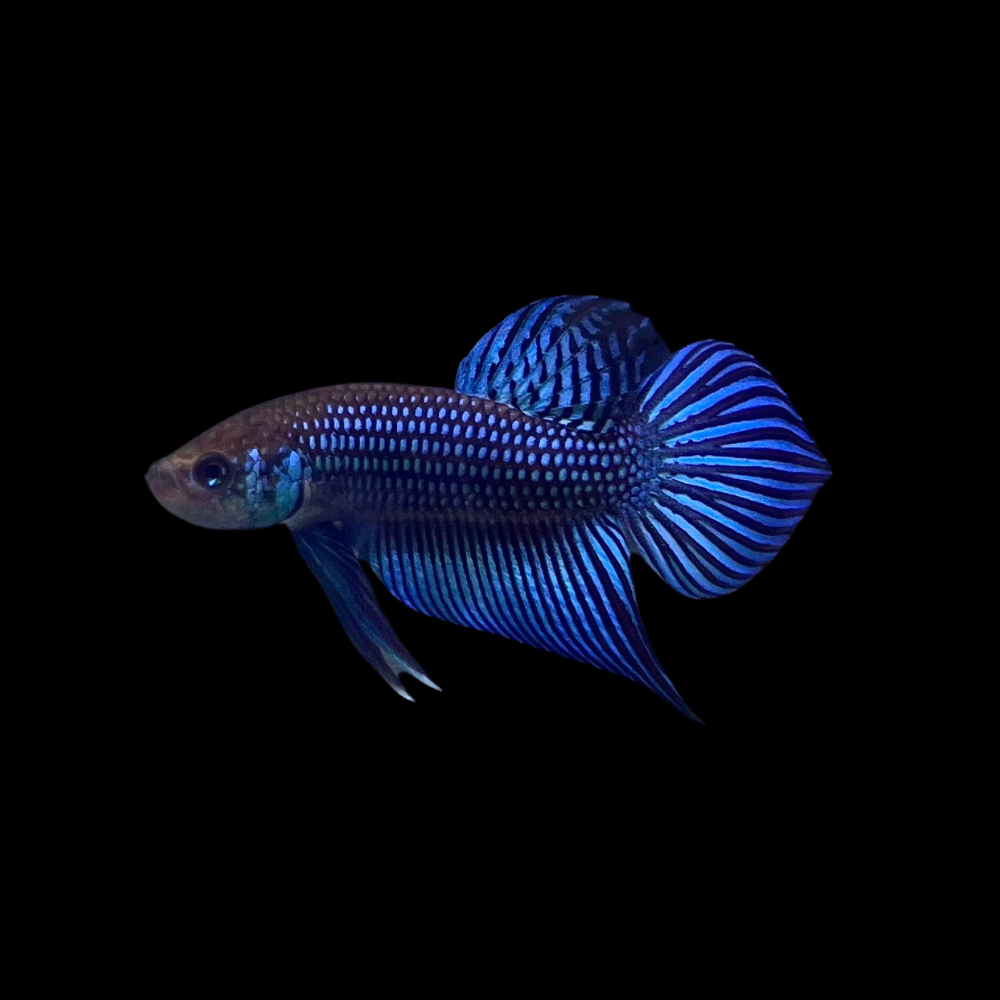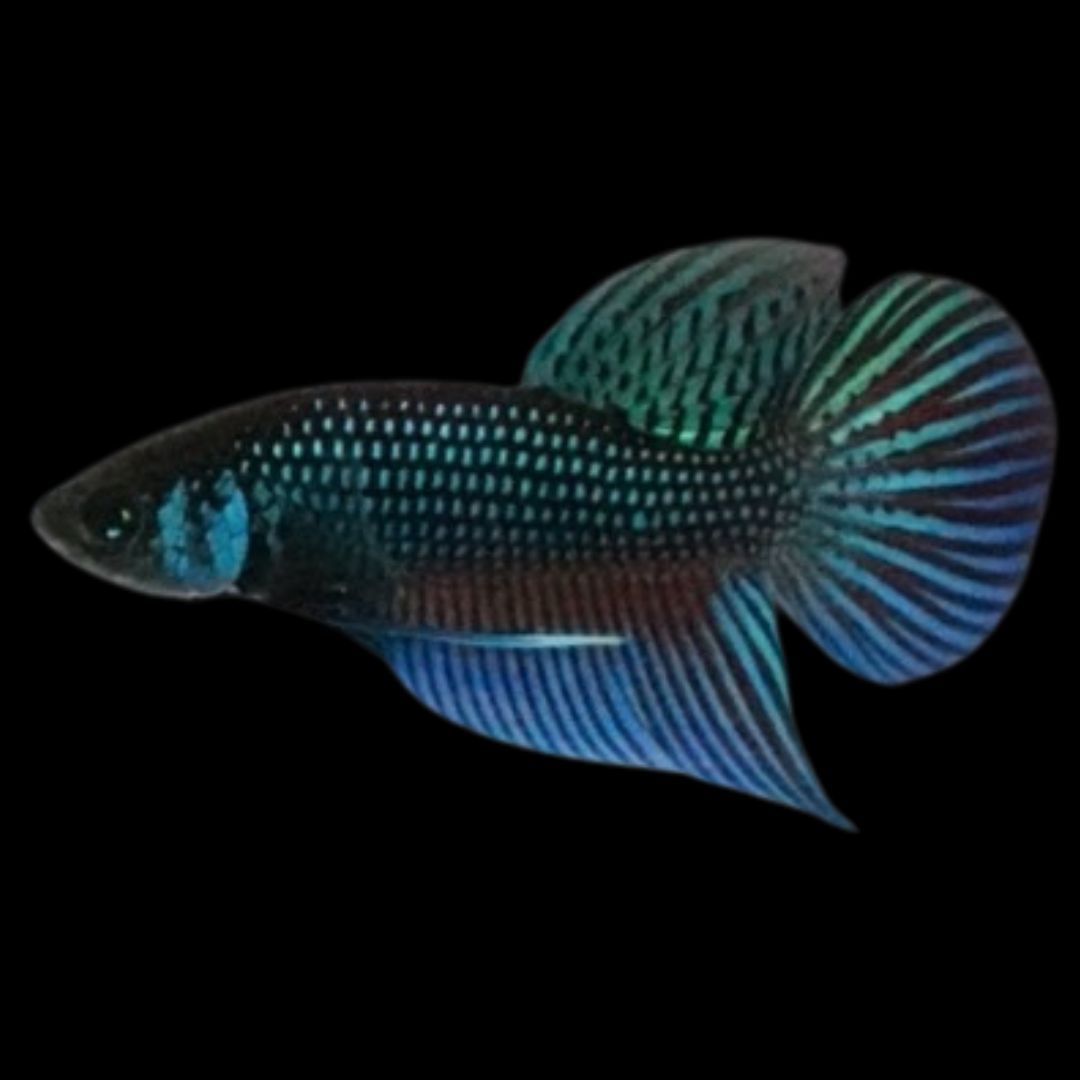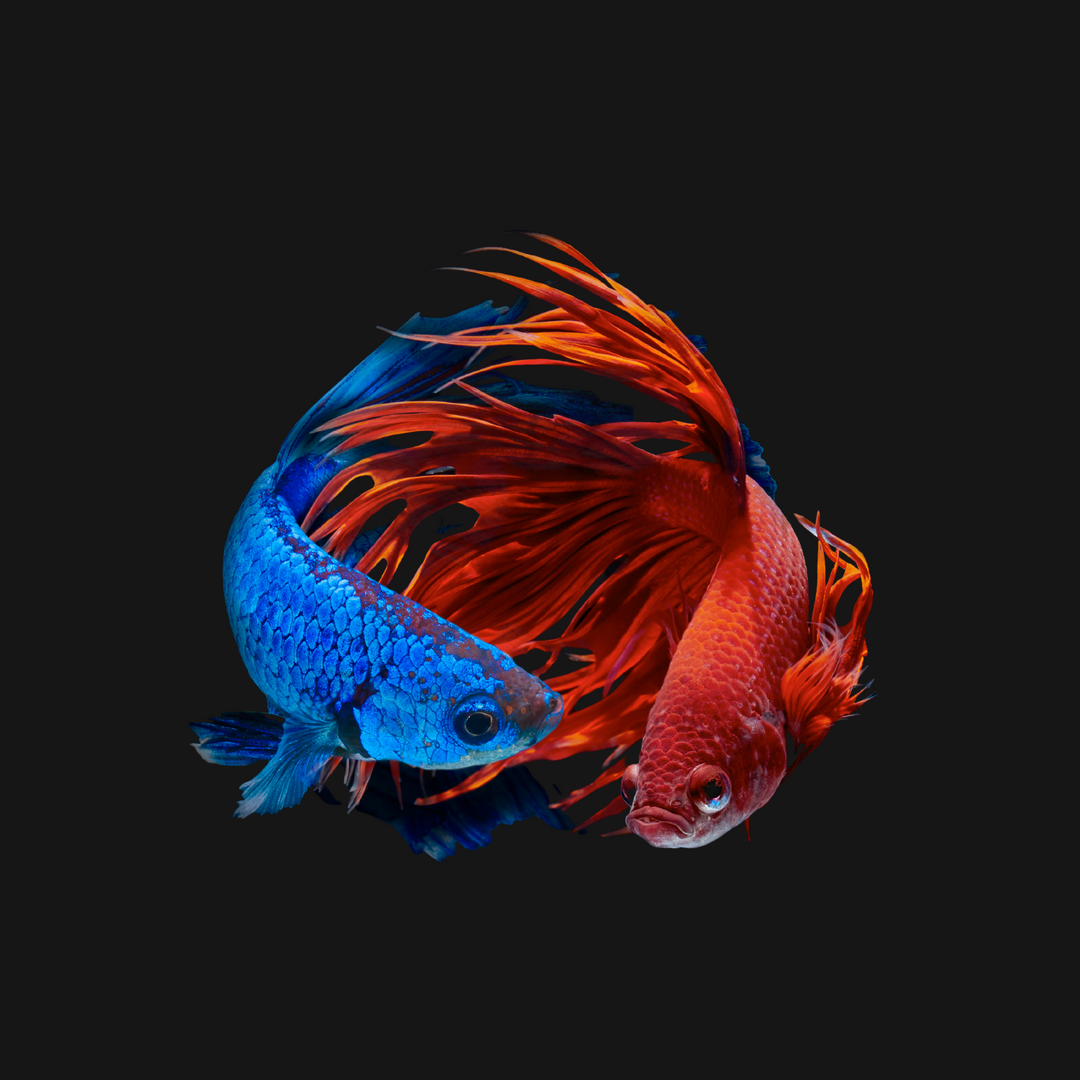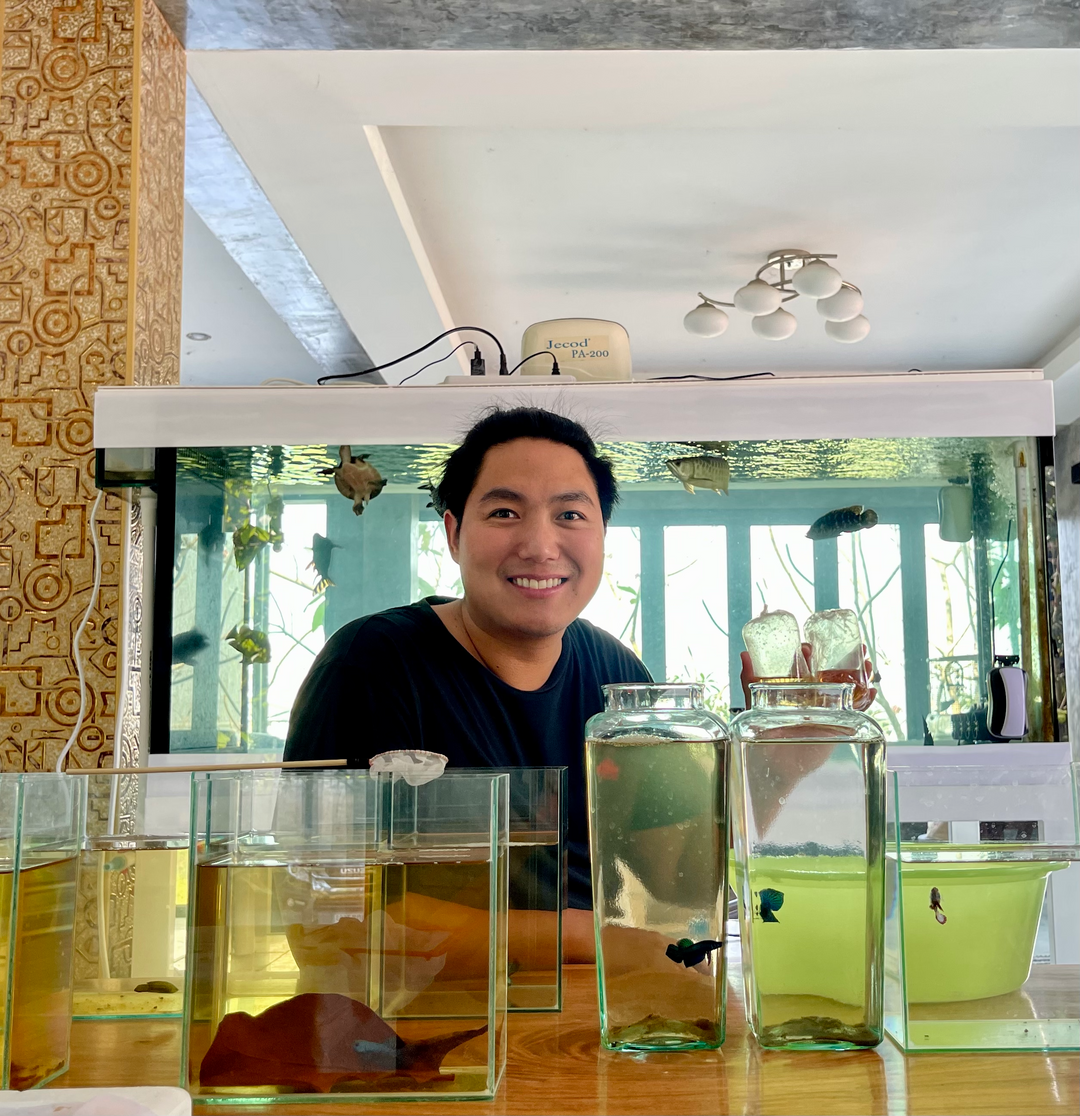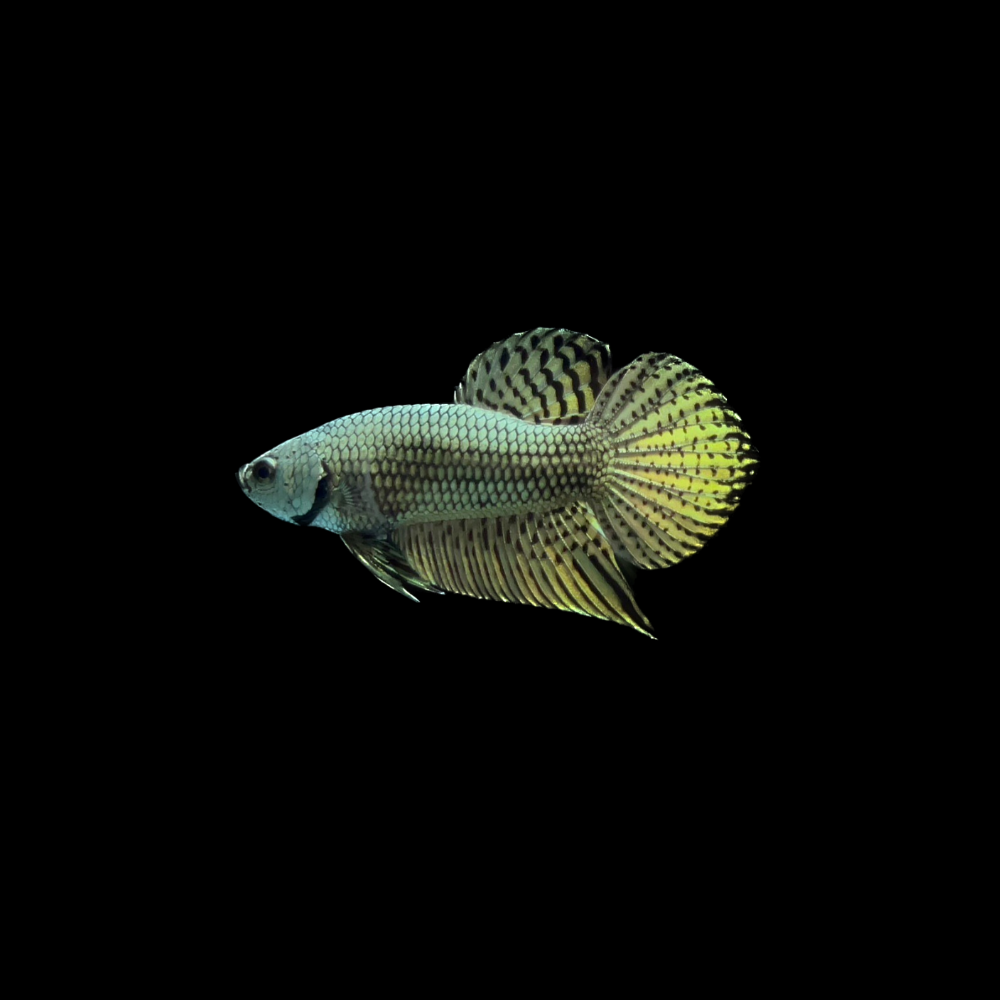
Alien
The Alien bettas are a relatively new hybrid breed of betta fish created by cross-breeding various species of wild bettas. Due to their unique colorations and patterns, they have become increasingly popular among aquarium hobbyists. These fish are typically characterized by a black or dark brown body with a striking metallic sheen, which creates a beautiful iridescence and pattern.
FAQs
About Alien Betta Fish
The history of the Alien Betta is a captivating tapestry of selective breeding and Thailand’s aquatic diversity. It’s a meticulous amalgamation of Betta Imbellis from Southern Thailand, Betta Smaragdina from the Northeast, and Mahachai Betta from central regions, each contributing unique traits. This combination gives Alien Betta its distinctive, vibrant colors, patterns, and a larger, resilient build, making it a unique and coveted specimen in the aquatic world. Originating from different ecological niches within Thailand, the Alien Betta symbolizes the rich biodiversity and varied landscapes of its homeland, embodying an extraterrestrial beauty that stands out in the aquatic hobbyist community. It’s a living reflection of Thailand's aquatic richness and a prized possession for those interested in the fascinating interplay of aquatic biology and genetics.
The name "Alien Betta" emanates from its exceptional and unprecedented appearance, showcasing a myriad of vibrant colors interlaced with a metallic sheen that sets it markedly apart from other betta varieties, giving it an almost extraterrestrial allure.
Alien Bettas surpass the average betta in size, achieving a length of about 2-2.5 inches or approximately 5-6.5 cm. Their larger size is one of the distinctive traits that appeal to enthusiasts looking for standout specimens.
In Alien Bettas, sexual dimorphism manifests prominently, showcasing distinctive differences between males and females, enriching the species' visual diversity. Males boast a lengthier, more streamlined body structure, accentuating their vibrant and intricate fin displays, which are typically more elaborate than their female counterparts. This elegant elongation enhances their visual appeal, making them an enthralling sight for enthusiasts. Conversely, females present a more compact and rounded physique, subtly complementing their male counterparts. Despite their subtler appearance, females carry a unique charm, contributing to the diverse aesthetic within the species. The contrasting appearances between male and female Alien Bettas not only allow for easy differentiation but also highlight the fascinating variety inherent within this meticulously bred species, adding layers of interest and intrigue for aquarists and Betta enthusiasts alike, fostering appreciation for the myriad forms and expressions nature manifests within a single species.
Like other types of Betta fish, Alien Bettas can be very territorial, so usually, it’s not a good idea to put them in the same tank with others, especially the males, because they will fight. Male Alien Bettas can’t live with each other at all, under any circumstances, as they will surely be aggressive towards one another. However, if you have a really big tank, you might be able to keep one male and a few females together. But even then, it’s super important to watch them closely for any signs of fighting or bullying. The tank should have plenty of places for the fish to hide and get away from each other to avoid conflicts. It’s crucial to keep an eye on them and make sure everyone is getting along.
Our Legacy
We work tirelessly for 30 years to uphold the high standards set by our Thai ancestors and fellow breeders, ensuring that each and every Betta Fish for sale we produce is of the highest premium quality and meets the expectations of our customers. When you buy live betta fish online from us, you're not just purchasing a beautiful and captivating pet. You're also becoming a part of a long and rich history, and joining a community of people who appreciate and value the beauty and wonder of these amazing Betta Fish.
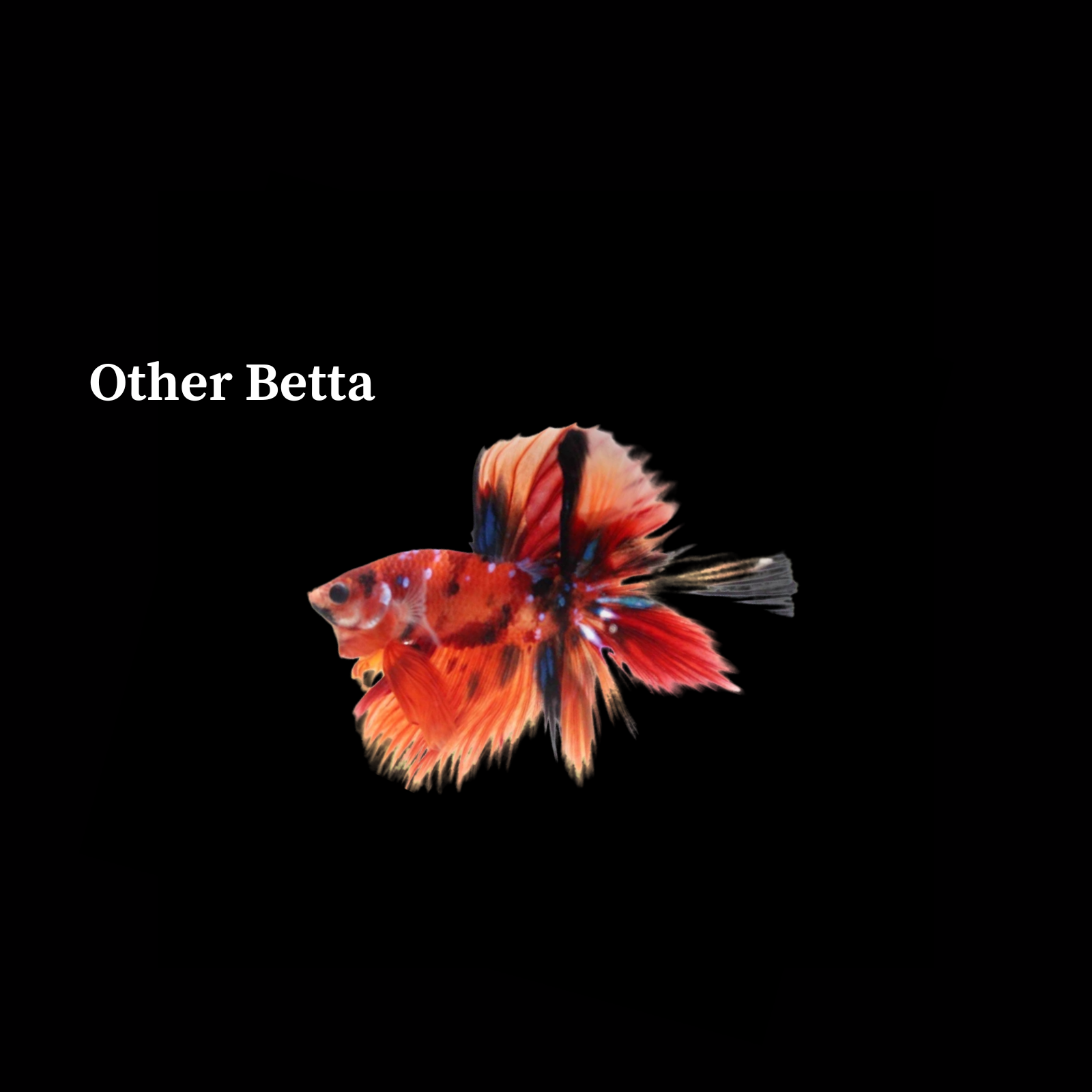
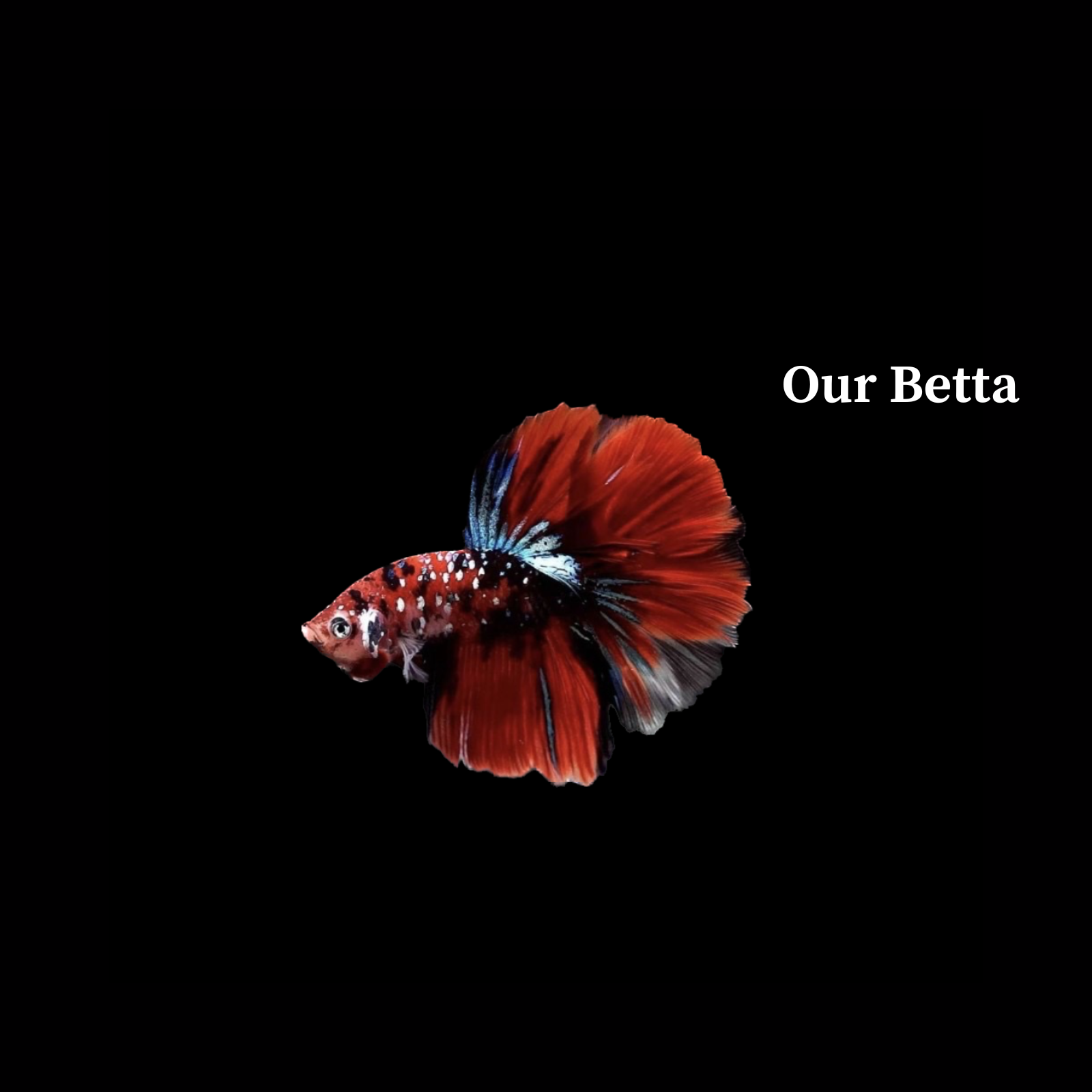
Alien Betta Fish Care Guide
Malabar leaves are pivotal for the health and well-being of Alien Bettas as they replicate the natural environment of these fish, providing them with a sense of security and comfort. These leaves release tannins into the water, mimicking the soft water conditions of their native habitats and helping in maintaining the ideal water parameters. The tannins have antimicrobial properties that aid in preventing diseases and infections. Furthermore, the leaves create a tea-colored hue in the water, which is not only natural but also beneficial for the Alien Bettas. The infusion of Malabar leaves in the water is not just an optional step but is a mandatory requirement to ensure the longevity and vibrant health of Alien Betta fish, making them feel more at home and reducing their stress levels.
Absolutely, Alien Bettas have a preference for warmer aquatic environments, ideally maintaining a water temperature range between 76-80°F (24-27°C), which is essential for their well-being and overall vitality.
To ensure the optimal health and well-being of Alien Bettas, it is crucial to conduct weekly water changes and consistently monitor water parameters, safeguarding against any deteriorations in water quality which could adversely affect the fish.
Alien Bettas, akin to other varieties of Betta fish, can experience a lifespan extending up to 3-5 years, provided they receive meticulous care, a balanced diet, and a stable, clean environment.
Indeed, Alien Bettas can thrive exceedingly well on a diet of high-quality Betta pellets. However, they do appreciate a variety in their diet, relishing occasional treats like live or frozen brine shrimp and bloodworms, which contribute to their overall health and vibrancy.
Alien Bettas should not be kept in clear water because clear water doesn’t replicate their natural environment. In the wild, the water is tinted and enriched with beneficial compounds due to the presence of decaying plant matter like Malabar leaves. These leaves release tannins, which have antifungal and antibacterial properties, aiding in the prevention of diseases and creating a more stress-free environment for the Alien Bettas. Furthermore, tannins slightly acidify the water, which aligns with the optimal pH levels for Alien Bettas, contributing to their overall well-being. So, to create a habitat that's similar to their natural one and promotes their health, it's crucial to avoid keeping Alien Bettas in clear, untinted water.
Alien Bettas have a really interesting way of breeding, and it’s called bubble-nesting. So, what happens is, the male Alien Betta will make a nest out of tiny bubbles at the top of the water. He takes a lot of time and care to do this because this nest is where the eggs will stay. It's a safe and secure place for them. When the nest is ready, and the eggs are laid inside, the male guards them very closely. He takes really good care of the eggs, making sure they are safe until they hatch into baby Bettas.
This way of having babies shows us the careful and dedicated sides of Alien Bettas. Watching them build their nests and care for their eggs is something really special and it helps us understand more about how these beautiful fish live and grow. It’s fascinating to see such careful and protective behavior in fish, and it adds another layer of interest to keeping Alien Bettas as pets. The bubble-nesting behavior is not just about having babies; it’s a display of the dedication and complexity in the lifecycle of Alien Bettas.
Breeding Alien Bettas is a delicate, intricate process, deeply rooted in traditional Thai methods, or "การเทียบปลากัด" ("Tieab Prakad"). It commences with positioning the female in a separate, smaller enclosure within the male's tank, promoting visual interaction while avoiding potential harm. A vital acclimation period of at least 7 days is needed to observe the female's readiness for mating, identified by the protrusion of the oviduct.
The reproduction environment must mimic the wild Bettas’ natural habitat, with a water depth of around 4 inches and the addition of an almond leaf. Once readiness is confirmed, the female is introduced to the male's space, leading to a series of courtship dances and embraces. After egg-laying and fertilization, the female is immediately removed to prevent egg consumption. The attentive male guards the future offspring in his bubble nest until they hatch, after which he is also removed.
Ensuring the well-being of the newborns, Morning Glory is added to supply crucial nutrients, and their diet gradually transitions to include Moina as they age. This elaborate breeding ritual demands attention, patience, and comprehensive knowledge of the Alien Bettas' specific needs and traditional breeding practices to successfully yield healthy, vibrant juveniles
They don’t just exhibit the same vibrant coloration as regular Betta fish but they take it to the next level. Alien Bettas are particularly renowned for their spectacular and distinctive colorations and patterns. The wide range of colors and unique appearances make them highly coveted and celebrated among Betta enthusiasts and aquarists. Alien bettas come in the following color variations.
- Green Alien Betta
- Copper Alien Betta
- Blue Alien Betta
- Red Alien Betta
Given their territorial nature, interactions should be monitored closely. Ideal tankmates are non-aggressive, fast-swimming species that can cohabit peacefully, minimizing the potential for territorial disputes and aggressions within the shared aquatic environment.
While it’s plausible, it requires meticulous planning, opting for compatible, non-aggressive tankmates and ensuring ample space and environmental enrichment to facilitate harmonious coexistence and minimize territorial conflicts within the communal setup. Keeping a close eye on everything is an important part of the process.
The pricing for Alien Bettas can exhibit a range, contingent on their distinctive traits and rarity. Given their unique and exotic appearance, prospective owners can expect to pay a slight premium for these extraordinary specimens.
The progenitors of the Alien Betta, specifically the Betta Imbellis, Betta Smaragdina, and the Mahachai wild betta, originate from diverse locales within Thailand, each contributing distinct traits to the Alien Betta's exceptional genetic makeup.
Alien Bettas share a similar susceptibility to diseases as other Betta varieties. Regular monitoring of water quality and immediate intervention at the onset of symptoms like Fin Rot, Ich, and Velvet are crucial to maintaining their health and well-being.
The metallic sheen of Alien Bettas is a pivotal characteristic that elevates their aesthetic appeal, contributing to their exotic and distinctive appearance, making them a sought-after variety among Betta enthusiasts and collectors.
Alien Bettas are very similar to other Betta species and will manifest territorial and aggressive tendencies, particularly among males during breeding seasons or when housed in proximity to other males, necessitating careful monitoring and management of their environments.
Remarkably, like many Betta varieties, Alien Bettas possess an impressive cognitive capacity. With consistent interaction, they can recognize their owners, exhibiting signs of recognition, and even be conditioned to respond to certain cues or stimuli, showcasing their intelligence and adaptability.
Water filtration is paramount for the well-being of Alien Bettas. A robust filtration system aids in maintaining a stable water chemistry, eliminating toxins, and providing necessary oxygenation, all of which are crucial for the vitality and health of these exquisite fish.
When introducing Alien Bettas to a new habitat, acclimatization is essential. Gradually introducing them to the new water parameters by floating their container in the aquarium and slowly mixing the waters over a span of an hour can mitigate potential shock, ensuring a seamless transition.
Alien Bettas generally thrive in planted tanks. Aquatic plants provide these fish with hiding spots, reducing stress, and promoting natural behavior. Moreover, live plants contribute to water quality by absorbing nitrates and providing supplemental oxygen.
Distinguishing a genuine Alien Betta requires a keen eye. Authentic Alien Bettas will exhibit the unique characteristics stemming from their three wild Thai betta ancestors, especially the metallic sheen and the combination of vibrant colors and patterns. Familiarity with these traits and purchasing from reputable breeders or sellers can help ensure authenticity.
To ensure the health of Alien Bettas, it's imperative to maintain optimal water conditions, offer a balanced diet, quarantine new aquatic additions, and consistently monitor for any signs of illness or distress, taking prompt action at the first indication of potential health issues.
Keeping Alien Bettas healthy means having water conditions just right! They prefer soft water, with hardness levels between 3 to 6 dH, and a slightly acidic to neutral pH level, between 6.8 and 7.4. A stable temperature between 76-80°F is crucial; use a reliable heater to avoid fluctuations. Regular water tests are important; there should be zero ammonia and nitrites, and nitrate levels should be below 20 ppm. Don’t forget to infuse the water with Malabar leaves—it’s mandatory for their well-being and gives the water a tea-colored tint. Avoid strong currents; a simple sponge filter and air pump can provide adequate oxygenation. If using tap water, remove harmful chlorine and chloramines with a specialized de-chlorinating agent. Regular attention and care to the water condition ensure your Alien Betta remains vibrant and thrives!
While Alien Bettas aren't overly demanding in terms of lighting, a well-balanced light spectrum can undoubtedly accentuate their vibrant colors and metallic sheen. Using lights designed for planted aquariums can illuminate their hues effectively, making them even more captivating. Subdued lighting works best as it brings out their brilliant coloration without making it look washed out.


